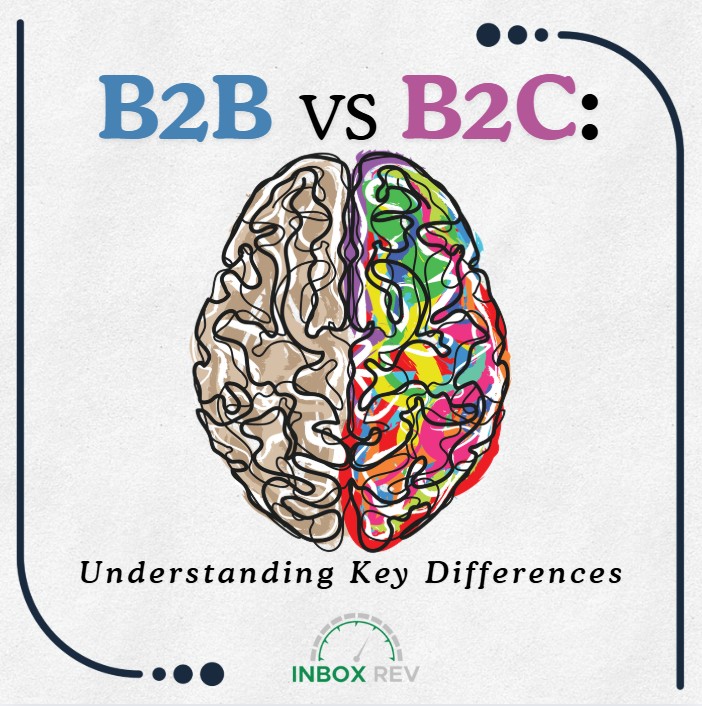B2B vs. B2C: Understanding Key Differences

The best marketing efforts hinge on deliverability, which is the ability of an email to reach a recipient’s inbox successfully rather than being blocked or marked as spam. While the fundamental principles of email marketing apply across the board, the approach to deliverability varies between business-to-business (B2B) and business-to-consumer (B2C) campaigns. Understanding these differences is important for marketers aiming to optimize engagement, maintain sender reputation, and achieve measurable results.
B2B communications typically target professionals who engage with email in a structured and intentional way. Since these recipients evaluate purchases that could involve long sales cycles, their engagement tends to be more measured. Open rates in B2B environments are often higher because work-related emails are prioritized. But responses may take time! Research indicates that mid-morning or early afternoon on weekdays are optimal sending times.
On the other hand, B2C emails cater to individual consumers whose purchasing decisions are more likely to be impulsive and/or emotionally driven. The competition for attention is intense as consumers are constantly overwhelmed with promotional content. Successful B2C emails leverage urgency, personalization, and compelling visuals to prompt immediate action. Unlike B2B, where weekdays dominate, B2C campaigns are more likely to see higher engagement during evenings, weekends, or holidays.
The tone and content of B2B/B2C emails must support their respective audiences. When you are emailing business professionals, imagine you are preparing an executive briefing. These readers are assessing whether you understand their challenges as they assess your message. That is why the most successful B2B emails read like well-prepared insights rather than advertisements. We have seen clients transform mediocre campaigns just by shifting from generic product benefits to specific results.
On the consumer side, you are fighting for attention against baby photos, dinner plans, and viral memes, along with competitors. For B2C, the emails that cut through the noise feel like they are coming from a knowledgeable friend, rather than a faceless corporation.
Maintaining a clean email list is relevant for B2B and B2C campaigns, but the challenges differ. In B2B marketing, spam filters are notoriously strict. A single spam complaint or high bounce rate can severely damage sender credibility, especially since most B2B emails are analyzed through enterprise-level security systems. To reduce these risks, marketers should implement double opt-in processes, segment lists by industry or job function, and gradually warm up new domains to avoid triggering spam filters.
B2C lists face issues related to scale and unpredictability. Consumers frequently update email addresses, abandon old accounts, or use disposable emails for sign-ups. High bounce rates and inactive subscribers can harm deliverability. This makes having a real-time email validation tool beneficial. B2C marketers should also monitor spam complaints vigilantly since ISPs like Gmail and Yahoo aggressively filter promotional content.
Campaign successes are measured differently in B2B and B2C environments. B2B typically has higher open rates due to its professional relevance. But click-through rates (CTRs) may be lower due to recipients often requiring multiple touchpoints before converting. Spam complaints are especially damaging in B2B due to corporate filters imposing harsh penalties on senders with poor reputations.
B2C campaigns often see fluctuating open rates, but higher CTRs when promotions resonate with audiences. But the large volume of marketing emails consumers receive means that even minor missteps, like misleading subject lines or excessive frequency, can lead to increased unsubscribe rates and spam flags.
At the end of the day, email marketing succeeds or fails based on one simple question: Does this feel like a message the recipient actually wants to receive? B2B marketers must focus on building trust through professional, value-driven messaging while maintaining list hygiene. B2C marketers should prioritize engagement, mobile optimization, and rapid adaptability to shifting consumer trends. By customizing strategies to the unique demands of B2B and B2C email marketing, businesses can maximize deliverability, enhance engagement, and achieve sustainable growth.
